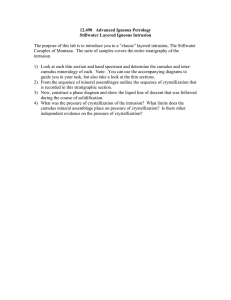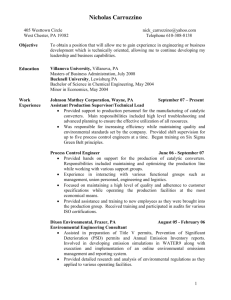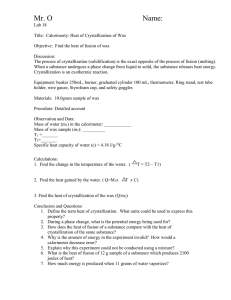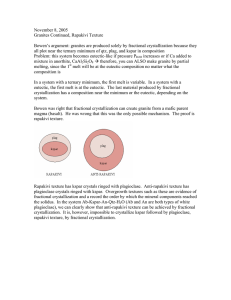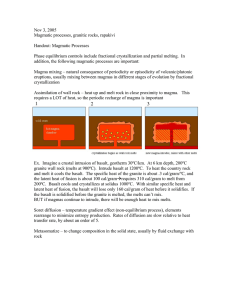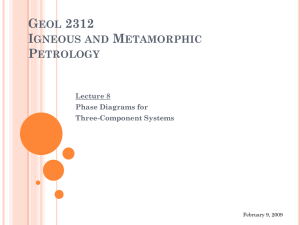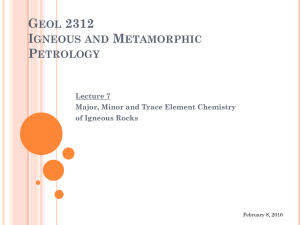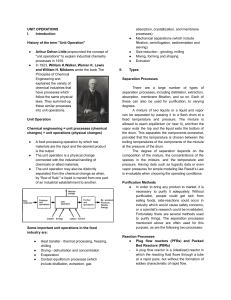12.109 Problem Set #2 Using Phase Diagrams
advertisement
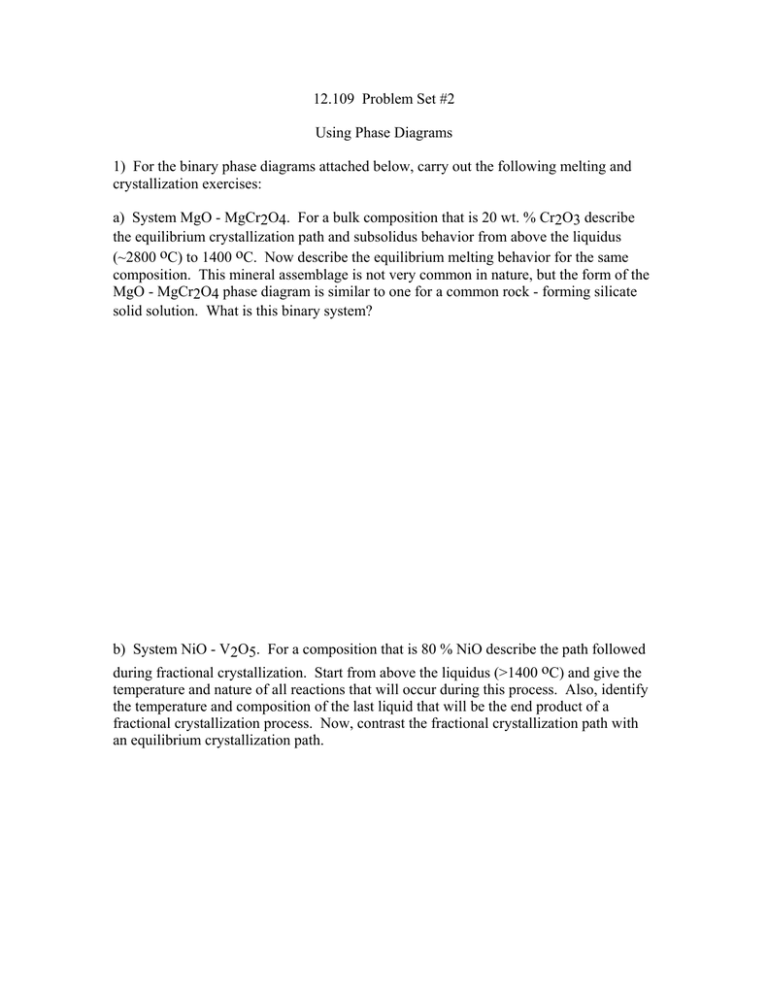
12.109 Problem Set #2 Using Phase Diagrams 1) For the binary phase diagrams attached below, carry out the following melting and crystallization exercises: a) System MgO - MgCr2O4. For a bulk composition that is 20 wt. % Cr2O3 describe the equilibrium crystallization path and subsolidus behavior from above the liquidus (~2800 oC) to 1400 oC. Now describe the equilibrium melting behavior for the same composition. This mineral assemblage is not very common in nature, but the form of the MgO - MgCr2O4 phase diagram is similar to one for a common rock - forming silicate solid solution. What is this binary system? b) System NiO - V2O5. For a composition that is 80 % NiO describe the path followed during fractional crystallization. Start from above the liquidus (>1400 oC) and give the temperature and nature of all reactions that will occur during this process. Also, identify the temperature and composition of the last liquid that will be the end product of a fractional crystallization process. Now, contrast the fractional crystallization path with an equilibrium crystallization path. 2) For the system Fo - Di - An construct isothermal sections at 1500, 1400, 1300 and 1200 oC. Show the single phase, two phase and three phase volumes at each temperature. Spinel (MgAl2O4) does not plot in the ternary, and the boundary curves for Sp + An + Liq and Sp + Fo + Liq are reaction curves. For the purposes of constructing isothermal sections assume that Sp plots at some negative value of Di, as shown on the phase diagram. What is the difference between point D and point E? Describe the solid liquid reactions that occur at D and E. Bulk composition A represents a simple system analog of a common volcanic rock type found on the earth. Identify the rock type and explain why A is a good simple system analog.


